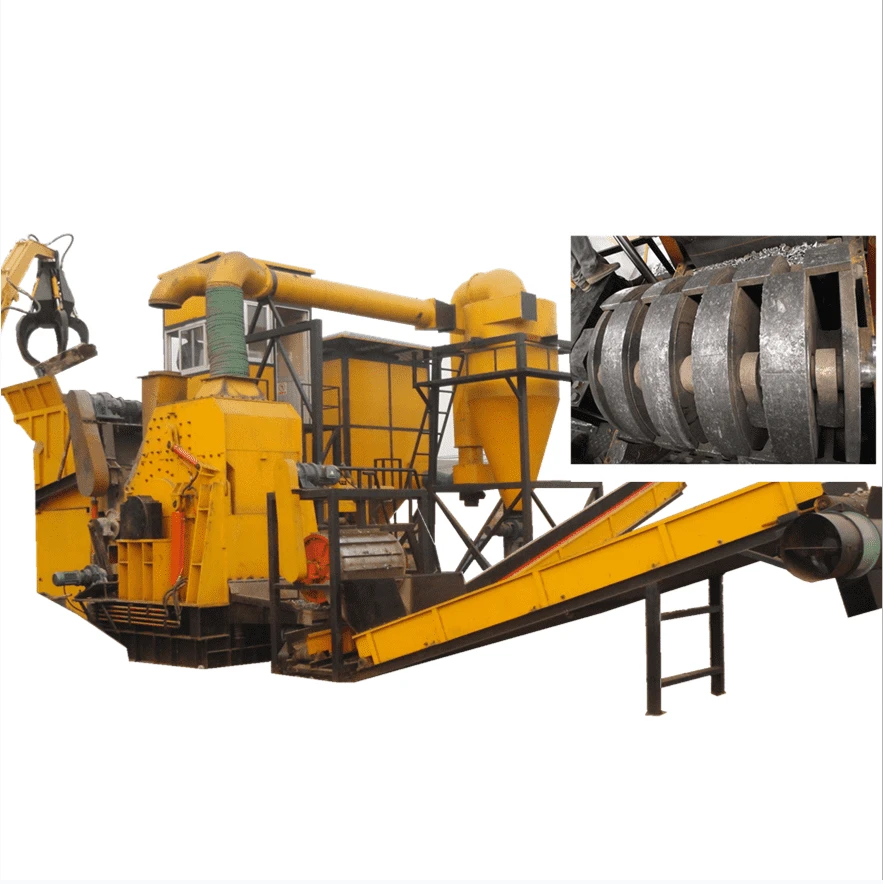

Aug . 12, 2024 23:24 Back to list
The Importance of Scrap Metal Plants in the Circular Economy
As the world grapples with the challenges of waste management and resource scarcity, scrap metal plants are emerging as vital players in the circular economy. These facilities not only contribute to environmental sustainability but also play a significant role in the economy by recycling valuable materials and reducing the need for virgin resources. This article delves into the function of scrap metal plants, their environmental benefits, and their significance in modern manufacturing.
The Function of Scrap Metal Plants
Scrap metal plants, often referred to as metal recycling facilities, are establishments where scrap metal is collected, processed, and recycled into new products. The process typically involves several stages collection, sorting, shredding, and melting. Scrap metals, which can include aluminum, copper, steel, and brass, are sourced from various origins, including manufacturing waste, construction sites, and consumer goods at the end of their life cycle.
Once collected, the metal is sorted into different categories based on type and quality. Advanced technologies, including magnetic separators, eddy current separators, and manual sorting, are employed to ensure a high quality of recycled material. After sorting, the metal is shredded into smaller pieces, making it easier to handle and process. The final step involves melting the shredded metal in furnaces, where it is refined and cast into new products, ranging from construction materials to automotive components.
Environmental Benefits
The environmental benefits of scrap metal plants cannot be overstated
. Recycling metal conserves natural resources by reducing the need for mining and extracting new ores. This is crucial in today's context, where the extraction of raw materials can lead to devastating ecological impacts, including habitat destruction and increased greenhouse gas emissions.
Moreover, the process of recycling metal requires significantly less energy compared to producing metal from raw ore. For instance, recycling aluminum saves up to 95% of the energy needed to create aluminum from bauxite ore. This energy efficiency translates into lower carbon emissions, contributing to efforts against climate change.
Additionally, scrap metal plants help mitigate the growing issue of landfill waste. Metals are non-biodegradable, and when disposed of in landfills, they can take centuries to decompose. By providing a proper channel for metal waste, these facilities ensure that valuable materials are kept out of landfills and are instead re-entered into the manufacturing supply chain.
Economic Significance
Beyond their environmental advantages, scrap metal plants are integral to the economy. They create jobs in local communities, ranging from labor-intensive roles in sorting and processing to engineering and management positions in plant operations. The recycling industry as a whole supports thousands of jobs and generates significant revenue.
In addition to job creation, scrap metal plants play a critical role in the supply chain for manufacturers. By supplying high-quality recycled metals, they help businesses reduce production costs and fulfill sustainability goals. As more companies pivot toward sustainable practices, the demand for recycled materials is expected to rise, positioning scrap metal facilities as essential suppliers in the manufacturing landscape.
Conclusion
Scrap metal plants are indispensable in the transition toward a more sustainable and circular economy. They offer a practical solution to waste management, conserve natural resources, and provide economic benefits by generating employment and supporting manufacturing. As we continue to prioritize sustainability, the role of scrap metal recycling will only grow in importance, making these facilities vital players in our future economy. Embracing metal recycling not only reflects a commitment to environmental stewardship but also paves the way for innovation and efficiency in manufacturing processes worldwide.
Latest news
Troubleshooting Common Eddy Separator Problems
NewsJul.04,2025
The Role of Metal Recycling Plants in Circular Economy
NewsJul.04,2025
The Impact of Recycling Line Pickers on Waste Management Costs
NewsJul.04,2025
Safety Features Every Metal Shredder Should Have
NewsJul.04,2025
How Industrial Shredders Improve Waste Management Systems
NewsJul.04,2025
How Cable Granulators Contribute to Sustainable Recycling
NewsJul.04,2025